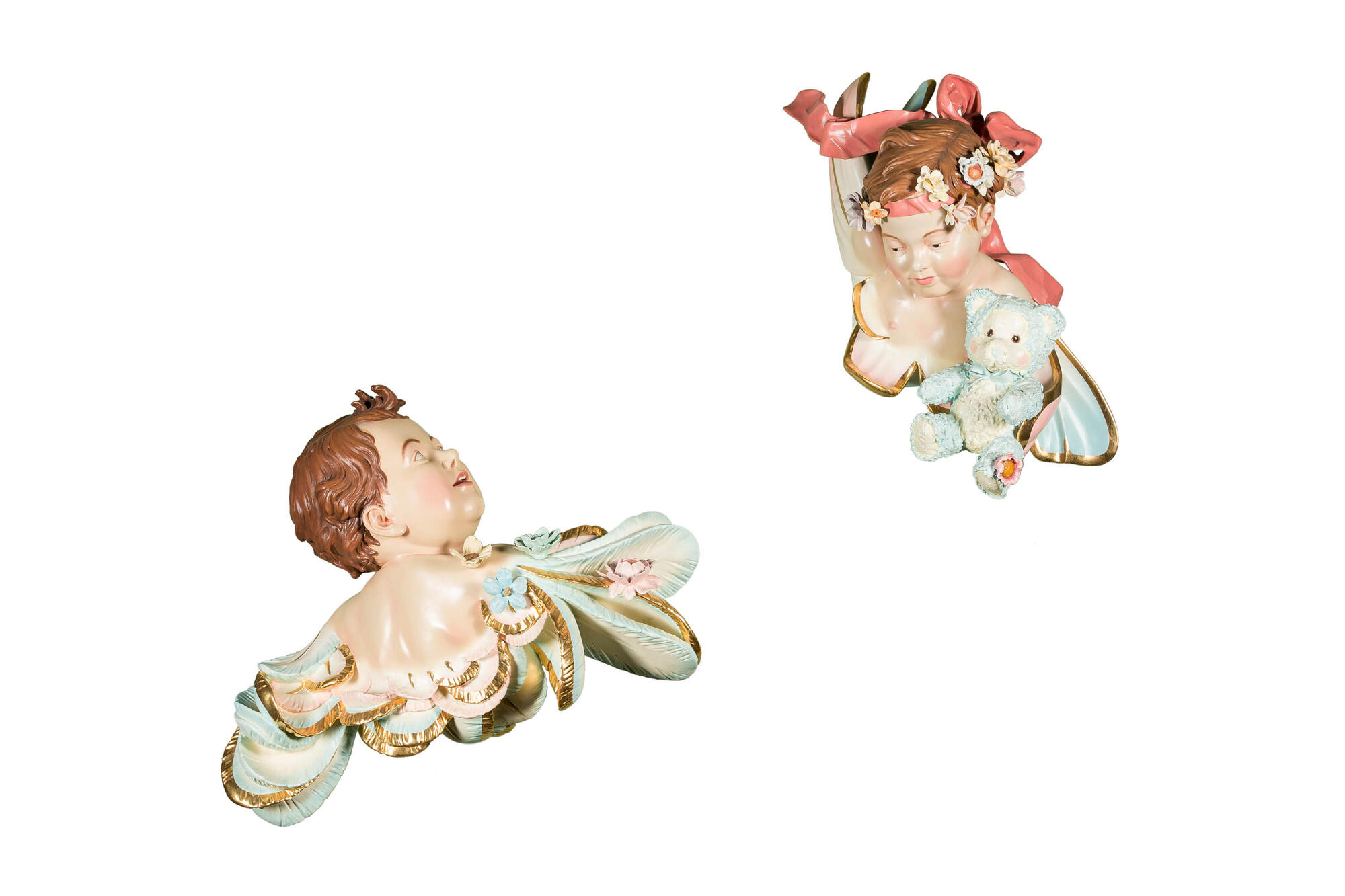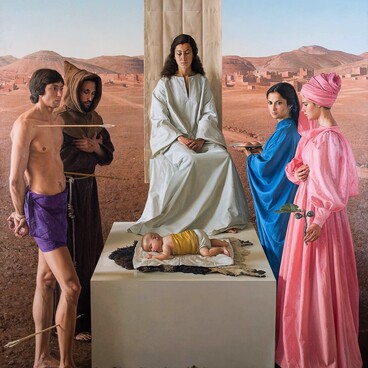Jeff Koons attended the School of the Art Institute of Chicago. He received his Bachelor of Arts from the Maryland Institute College of Art in Baltimore. In 1977, he moved to New York. After working as a Wall Street broker for several years, Koons began his professional art career. The artist gained recognition in the mid-1980s, exhibiting sculptures of household items in plexiglass (acrylic glass) cases. Koons lives and works in New York City and York, Pennsylvania.
Koons’s art balances on the verge of pop art and kitsch.
The term “kitsch” originated in Germany in the 1860s and 1870s. It was used to refer to art objects that were produced for American buyers and sold at European vernissages. The word comes from the German verbs “kitschen” (“do something in a negligent way”) and “verkitschen” (“sell something that is far from the thing that had been originally ordered”). These works of art were of low cost and low artistic value. Thus, kitsch became an opposition to high art.
Koons became a follower of Andy Warhol’s theory of “business art” as a kind of parody. This theory claimed that the best form of art is a knack for making money. In the 1980s, he set up a factory-like studio in SoHo in New York. At the studio, thirty hired employees “produced” his art. Koons selected Asian toys, kitsch postcards, pornography, photographs of dogs, angel figurines, both souvenir and altar ones, as the basis for his work. As for the materials for his sculptures, the artist used porcelain, stainless steel, and painted wood.
The work “Cherubs” reminds of painted wooden sculptures of saints and angels, popular among Catholics. This kind of art is characterized by extravagantly bright colors, excessive gilding, and fanciful decorations. Koons brought the decorative effect of the work almost to the point of absurdity: the wings of the angels are blue and pink, gilded and resemble candy wrappers or dresses of fairies from children’s cartoons. The wings and hair of the figures are decorated with flowers, and one of them holds a teddy bear.
Koons’s cherubs poke fun at commonplace taste, and at people whose idea of beauty is limited to vulgar trinkets from souvenir shops. His work also mocks the endless reproduction of religious images on postcards and posters.
Koons’s art balances on the verge of pop art and kitsch.
The term “kitsch” originated in Germany in the 1860s and 1870s. It was used to refer to art objects that were produced for American buyers and sold at European vernissages. The word comes from the German verbs “kitschen” (“do something in a negligent way”) and “verkitschen” (“sell something that is far from the thing that had been originally ordered”). These works of art were of low cost and low artistic value. Thus, kitsch became an opposition to high art.
Koons became a follower of Andy Warhol’s theory of “business art” as a kind of parody. This theory claimed that the best form of art is a knack for making money. In the 1980s, he set up a factory-like studio in SoHo in New York. At the studio, thirty hired employees “produced” his art. Koons selected Asian toys, kitsch postcards, pornography, photographs of dogs, angel figurines, both souvenir and altar ones, as the basis for his work. As for the materials for his sculptures, the artist used porcelain, stainless steel, and painted wood.
The work “Cherubs” reminds of painted wooden sculptures of saints and angels, popular among Catholics. This kind of art is characterized by extravagantly bright colors, excessive gilding, and fanciful decorations. Koons brought the decorative effect of the work almost to the point of absurdity: the wings of the angels are blue and pink, gilded and resemble candy wrappers or dresses of fairies from children’s cartoons. The wings and hair of the figures are decorated with flowers, and one of them holds a teddy bear.
Koons’s cherubs poke fun at commonplace taste, and at people whose idea of beauty is limited to vulgar trinkets from souvenir shops. His work also mocks the endless reproduction of religious images on postcards and posters.



